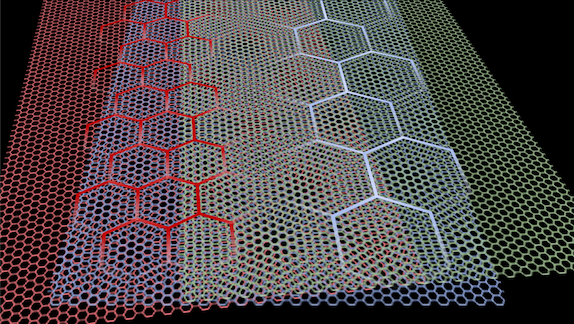
Aviram Uri, Sergio C. de la Barrera, Mallika T. Randeria, Daniel Rodan-Legrain, Trithep Devakul, Philip J. D. Crowley, Nisarga Paul, Kenji Watanabe, Takashi Taniguchi, Ron Lifshitz, Liang Fu, Raymond C. Ashoori & Pablo Jarillo-Herrero
https://doi.org/10.1038/s41586-023–06294‑z
Abstract:
Electronic states in quasicrystals generally preclude a Bloch description1, rendering them fascinating and enigmatic. Owing to their complexity and scarcity, quasicrystals are underexplored relative to periodic and amorphous structures. Here we introduce a new type of highly tunable quasicrystal easily assembled from periodic components. By twisting three layers of graphene with two different twist angles, we form two mutually incommensurate moiré patterns. In contrast to many common atomic-scale quasicrystals2,3, the quasiperiodicity in our system is defined on moiré length scales of several nanometres. This ‘moiré quasicrystal’ allows us to tune the chemical potential and thus the electronic system between a periodic-like regime at low energies and a strongly quasiperiodic regime at higher energies, the latter hosting a large density of weakly dispersing states. Notably, in the quasiperiodic regime, we observe superconductivity near a flavour-symmetry-breaking phase transition4,5, the latter indicative of the important role that electronic interactions play in that regime. The prevalence of interacting phenomena in future systems with in situ tunability is not only useful for the study of quasiperiodic systems but may also provide insights into electronic ordering in related periodic moiré crystals6,7,8,9,10,11,12. We anticipate that extending this platform to engineer quasicrystals by varying the number of layers and twist angles, and by using different two-dimensional components, will lead to a new family of quantum materials to investigate the properties of strongly interacting quasicrystals.
